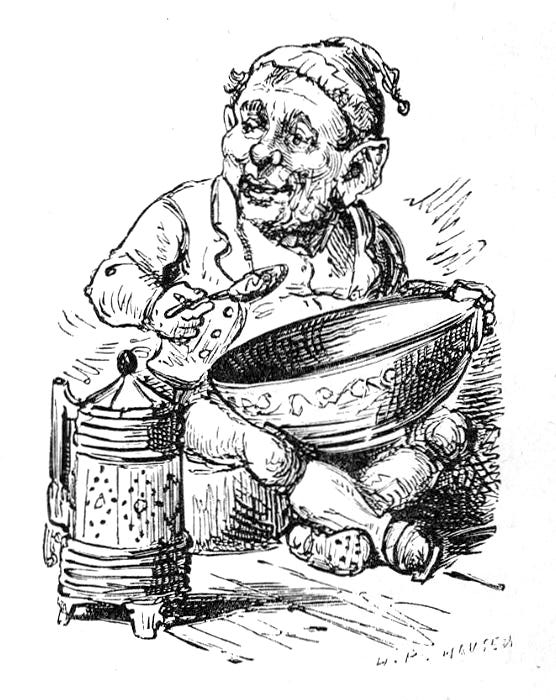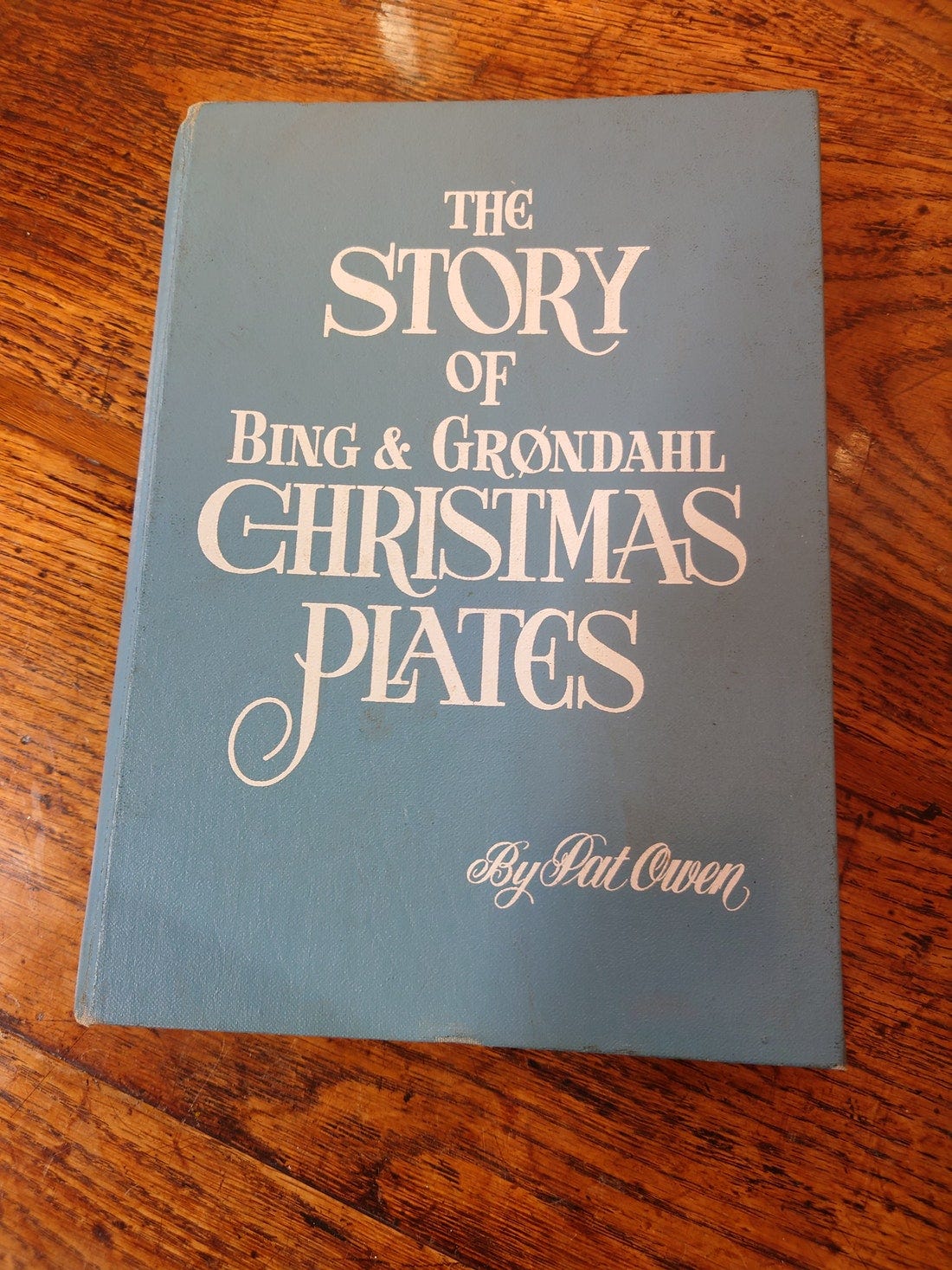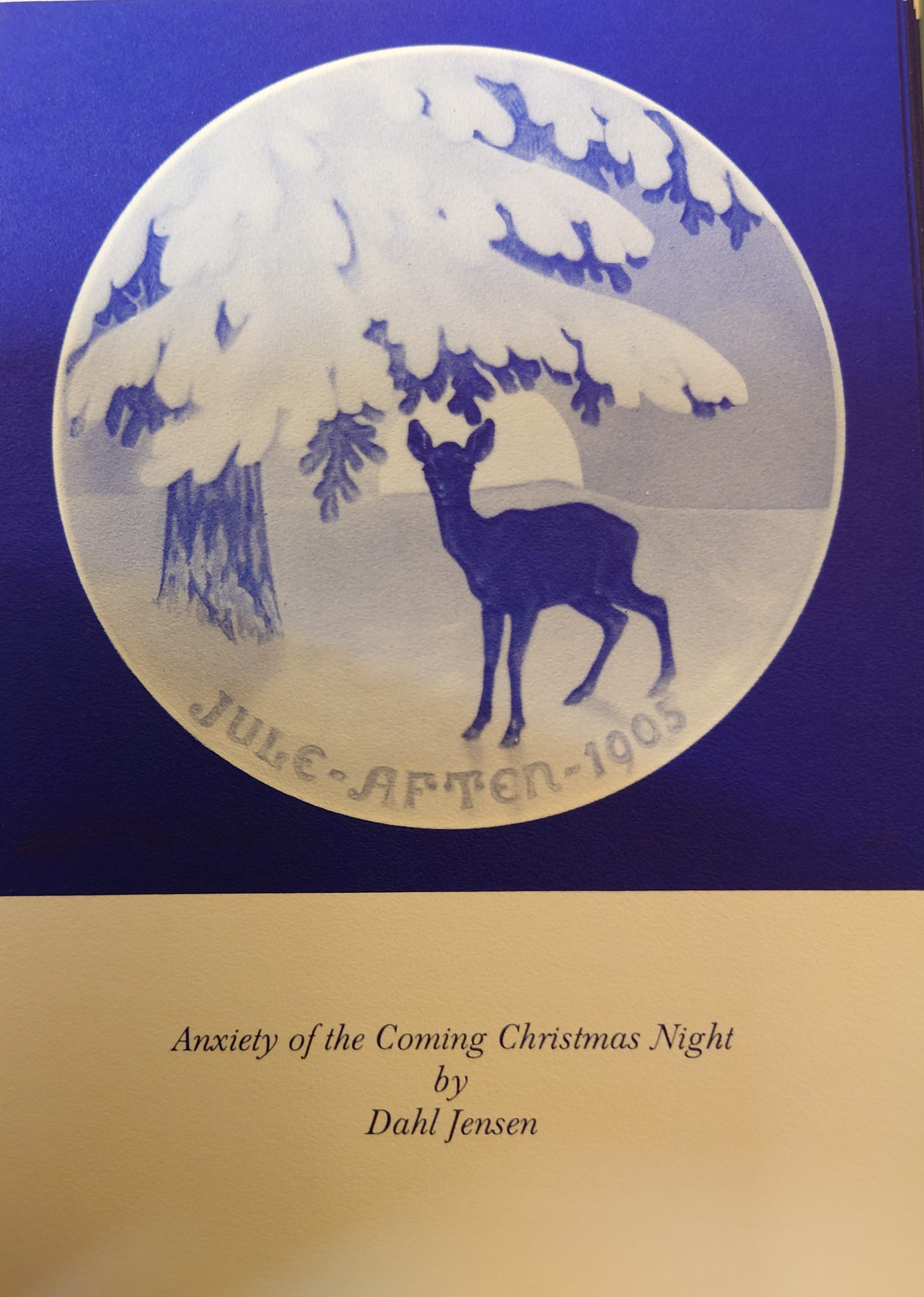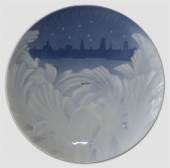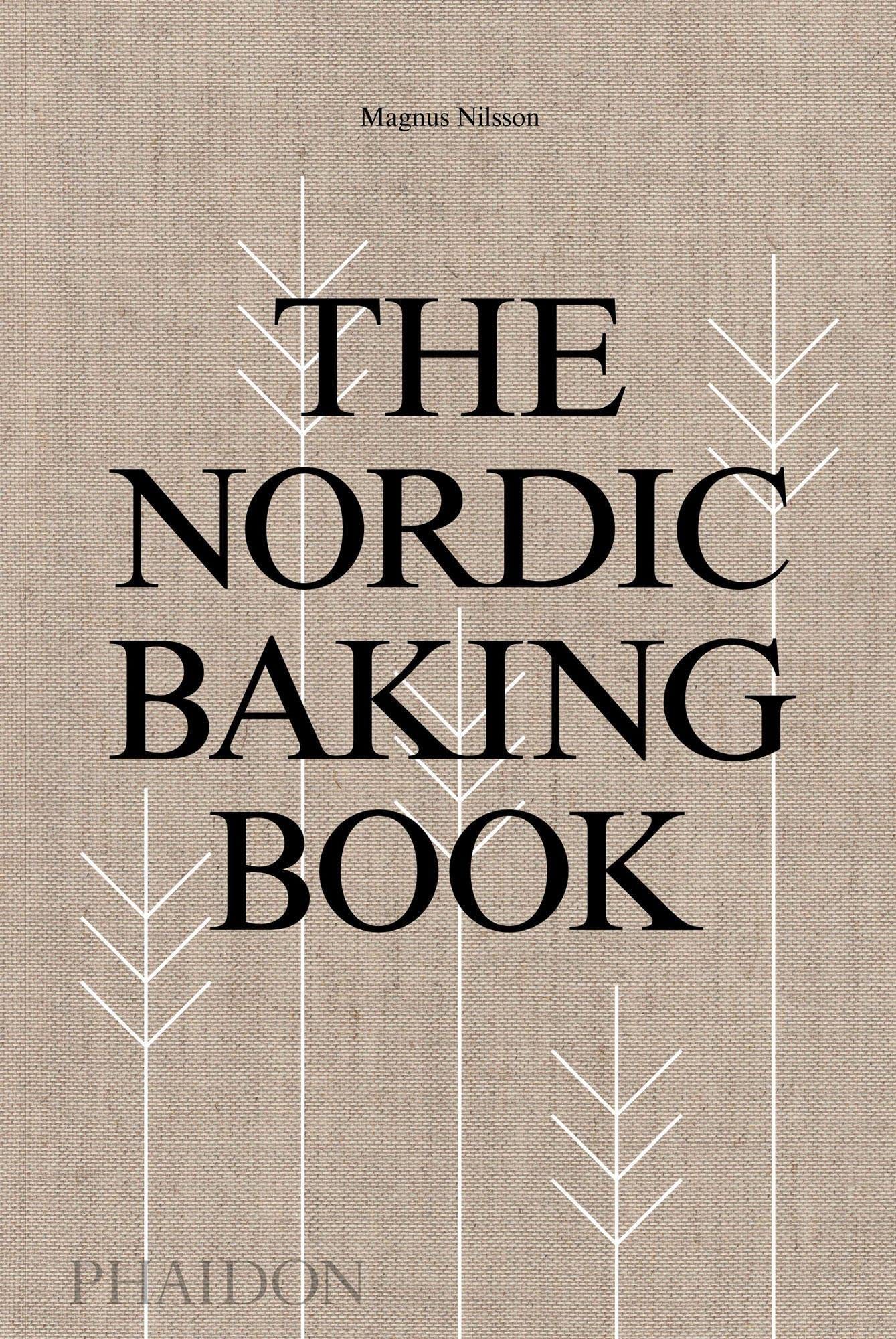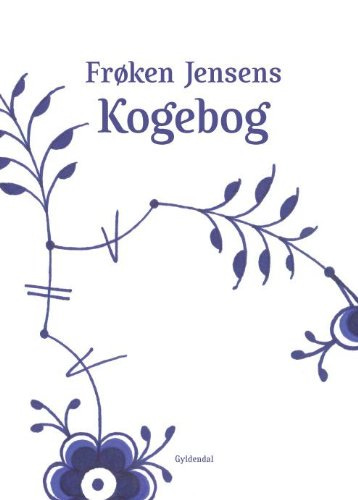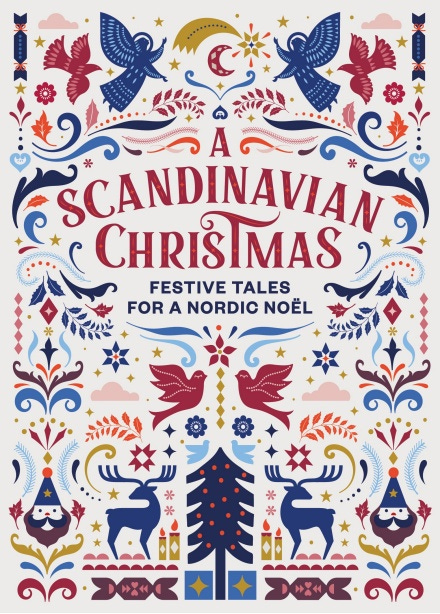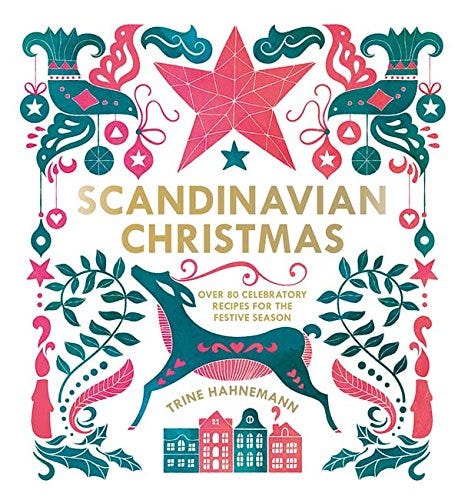Christmas Plates: Advent #8
Welcome to the eighth in a series of posts for Advent. I will be sending these out every few days, some will be paywalled, and you should think of this series as a kind of literary advent calendar. Today we’re looking at Danish festive traditions and the birth of the Christmas plate.
How to keep a Danish Christmas pixie happy: December 23rd — Lillejuleaften— (‘Little Christmas Eve’) is the time to boil lots of short grain pudding rice in water before adding creamy milk (cremet mælk) and a split vanilla pod. Keep cooking until it is thick and pearly. Spoon in salt and sugar. The next day, chop some almonds (but leave one whole!) and add the seeds of a second vanilla pod to the rice. Whip double cream into peaks that roll as gently as the Samsø Nordby Bakker. Fold it in, in thirds. Add the chopped almonds. Keep the whole almond for the big dinner on Christmas Eve; make sure it is a magnificent looking nut. Now, place a bowl of your rice porridge outside in the snow to nourish the nisser, the Christmas pixies who guard your homestead. If you are lucky, they will confirm their existence by eating it. If you forget, expect to find the tails of your cows tied together. Sing ‘The Nisse in the Barn’ which tells the story of a nisse who’s trying to keep rats from stealing his porridge:
The nisse sits in the loft with his Christmas porridge,
his Christmas porridge, so good and sweet.
He nods and he eats and he is so happy,
because Christmas porridge is his favorite food.
The rest of the rice pudding should be kept cold overnight.
On Christmas Eve, add the whole almond to your risalamande, making sure it is very well hidden. Bring to the table a large jug of cherry sauce. Sit down with your guests, serve the first portions and if you find the almond, keep your counsel until the entire bowl of rice pudding has been eaten. This may require you to sit there with an almond hidden in your cheek, like a hamster, but if you manage to fool everyone, your prize may be a small marzipan pig. The Danish Christmas Eve feast involves a lot of food and drinks, so when it’s time to dance around the tree, give it your all.
In Germany, they have a Bunter Teller, a plate of colourful (often-baked) treats placed under the tree and on the table for passing guests and family to peruse. There’s even a song about the tradition. The plates are traditionally made from paper (and a browse on Etsy reveals many still for sale), but Germany is not the only country where they do this. My friend lives in Racine, Wisconsin (home to a sizeable Danish-American population), and at Christmas, she takes a plate of cookies and nuts to her best friend’s house. The plate is part of the gift, and, in homage to their ancestors, it is hung on the wall after the cookies are gone.
My Danish friend collects these plates and, now, so do I. She piles them high with Pebber Nodder (Christmas cookies flavoured with cardamom and cinnamon), Æbleskiver, and gnarly fried Klejner spiced with more cardamom and lemon. She tells me in old Denmark, Danish masters and mistresses would give a decorative wooden or metal plate gift to their staff members. The servants could get quite competitive about whose plate was the best, but nowadays, the competition is the price and relative scarcity of an antique plate. They can sell for a lot of money.
I’ve been thinking about this because I came across two chunky ringbound books in a local antique centre a couple of months ago. The Story of Bing and Grondahl Christmas Plates: The First Hundred Years and The Story of Royal Copenhagen Christmas Plates written by Pat Owen were published by Viking Import House Inc with a foreword by Kaj Buchardt, Director in Royal Copenhagen Porcelain manufactory. Some editions of the B&G book are loose-leafed, allowing owners to add new pages as each year passes and a new plate is issued. The moment I saw them, I was smitten.
Here’s a colour plate of my favourite plate from 1905. I long to own this. When you think about what lay in Europe’s near future, the design feels even more poignant.
The Bing & Grøndahl Danish porcelain manufacturing company was formed in Copenhagen in 1853 by Frederick Grøndahl, an artist and sculptor from the Royal Copenhagen porcelain company and backed by two brothers Meyer and Jacob Bing.
In 1895, B&G issued its first Christmas plate, hiring Swedish artist Frans August Hallin to create the motif, abas relief design handpainted in shades of what became known as “Copenhagen blue,” using an underglaze technique. ‘Behind the Frozen Window’ became the first limited edition collector’s plate after Harold Bing ordered the destruction of the mould used to make it. To this day, the moulds continue to be destroyed and all unsold plates from a particular year removed from sale and broken by Dec. 31st. In 1908, the Royal Copenhagen factory started to produce its porcelain Christmas plates made from porcelain and in 1985, B&G merged with their competitors. However, both companies continue to issue separate plates under their own trademark. Each year, different artists are invited to design the plates.
The tradition of the Danish plate (Via NYT archive)
A reasonably complete list of B&G plates.
A few Scandinavian-themed books:




